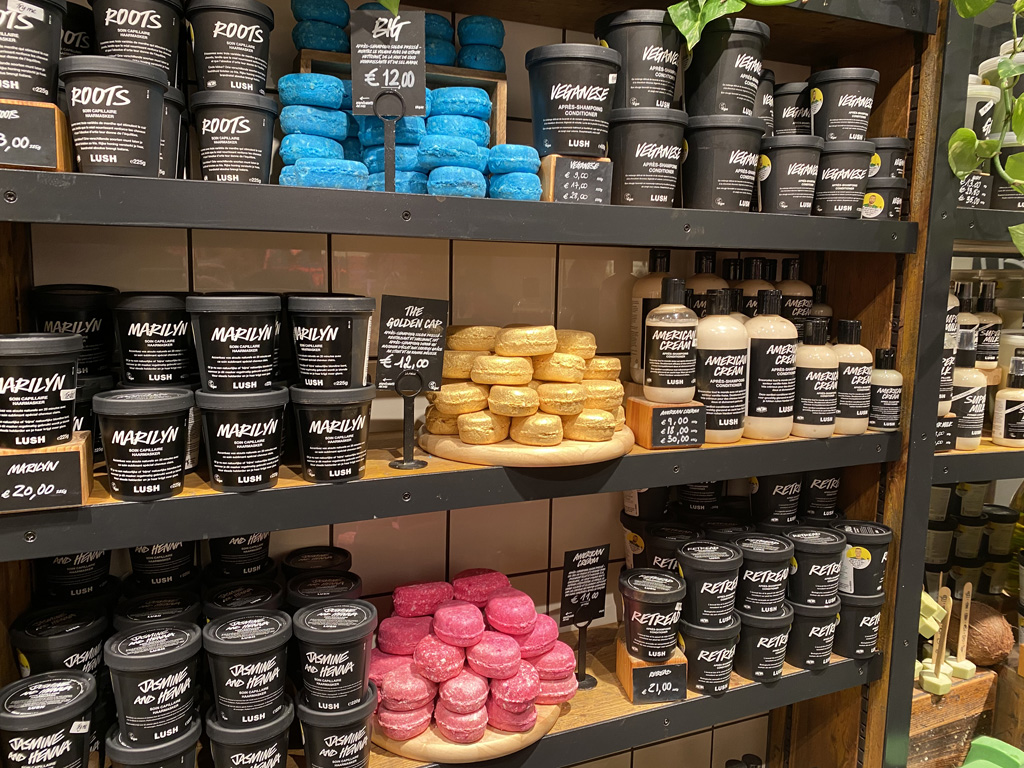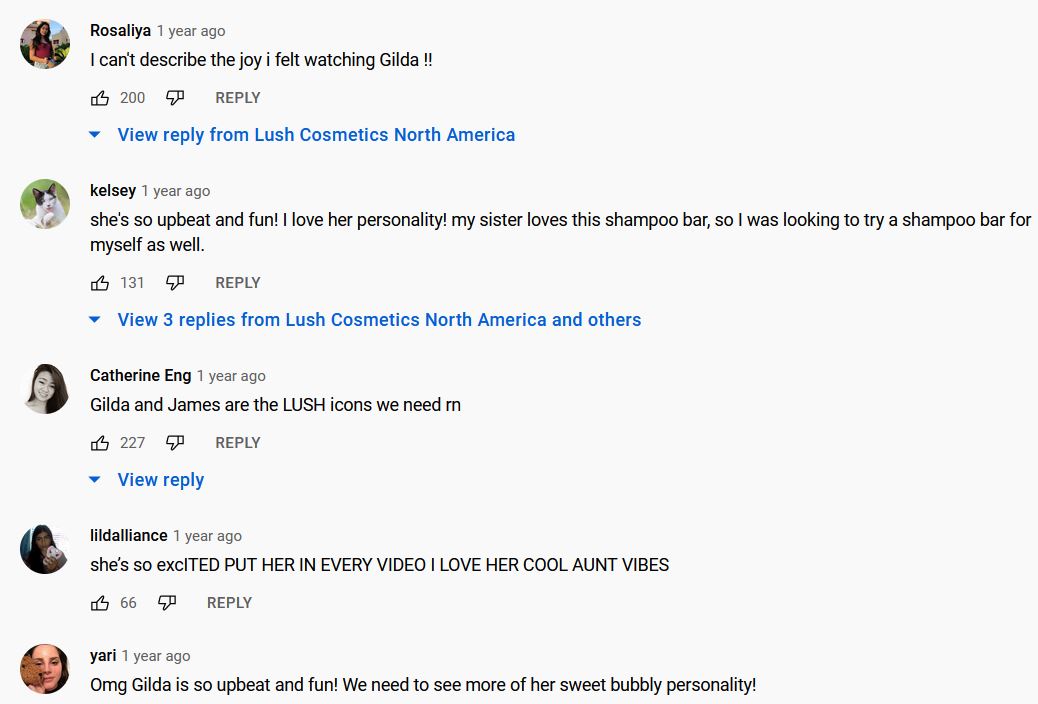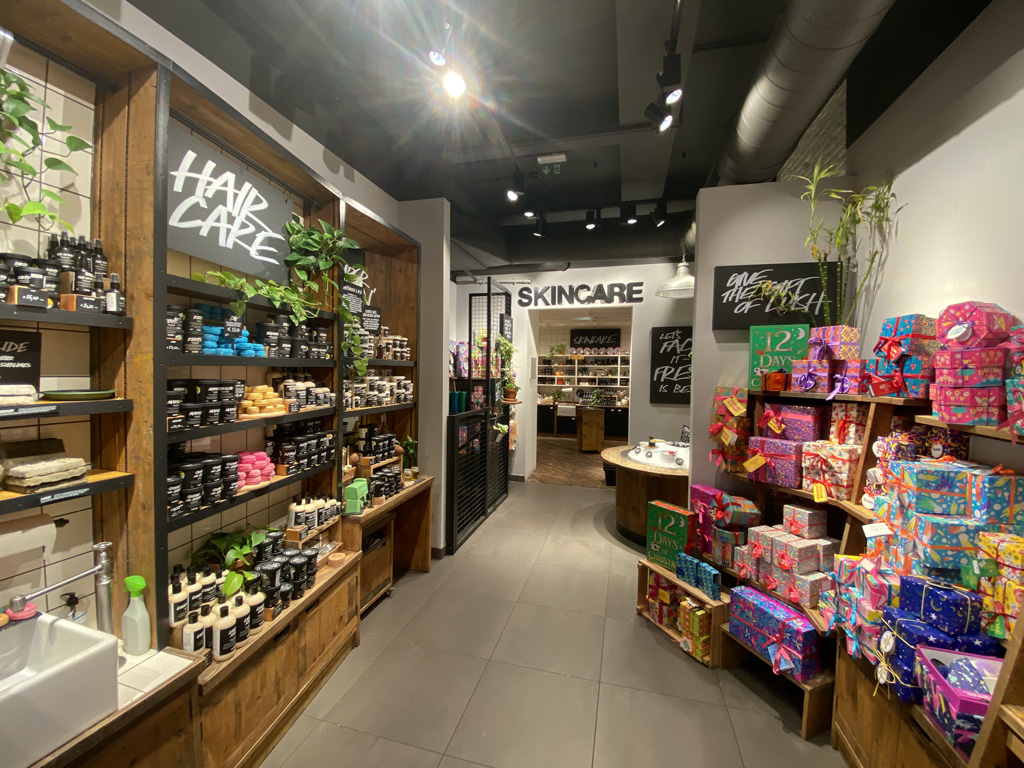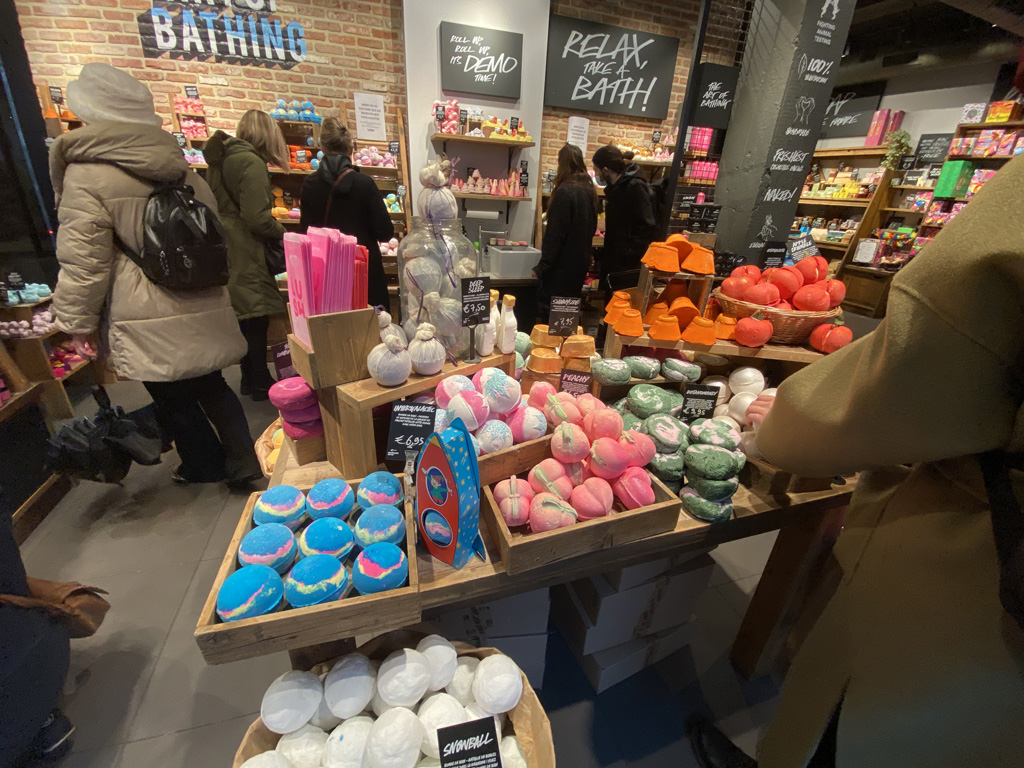
We have often talked about the cosmetics brand Lush as an example of customer experience. Today we propose an analysis of the Lush marketing mix. We will follow the 7P method, the steps of which you will find in our marketing mix analysis grids.
The Lush Marketing Mix in 30 seconds
The Lush marketing mix is a complex assembly of products, price, communication, distribution, people, processes, and physical environment. The company focuses on natural, artisanal cosmetics not tested on animals. Products must be fresh and artisanal. Each item, minimally but distinctively packaged, underlines the brand’s commitment to sustainability. Regarding pricing, Lush adopts value-based and size-dependent pricing strategies, with occasional reductions and more frequent online promotions.
For communication, Lush favors guerrilla marketing, with window displays that can reflect inclusive and ethical stances. The brand’s online presence is strong, with videos taken in the workshops. These promote transparency and connect consumers to the artisanal nature of the products. Distribution is exclusive to Lush boutiques and e-commerce, reinforcing the brand’s integrity.
At the heart of Lush’s strategy are its employees. These people embody the joy and empathy of the brand. They become essential cogs in the customer experience and vectors for customer loyalty. Their interactions, often highlighted in social media content, reinforce the brand’s dynamic image.
Regarding processes, Lush differentiates its customer service by online region and empowers offline store managers to satisfy customers pragmatically. The physical stores are sensory experiences, using sight, smell, and sound to immerse customers in the Lush atmosphere, complemented by natural materials in the store design. This comprehensive marketing mix effectively communicates Lush’s brand values and creates a distinctive and memorable customer experience.
The product
The product is the cornerstone of Lush’s marketing mix. Its marketing positioning is based on the promise of natural, “fresh” products (this notion being relatively vague) and not tested on animals. The marketing mix is therefore naturally expressed through all the attributes of the products.
Lush’s branding is that of a brand that wants to bring joy and positive energy to its customers. The products are therefore very colorful to convey this value.
Packaging is a central element of the Lush marketing mix. A unique, minimalist jar design is used for the creams. The date of manufacture and the identity of the person who made it are shown on the packaging. In addition to being a differentiating element that proves the artisanal and fresh character of the products, the label is almost a collector’s item because we want to know the people behind the products.
The packaging is also a way to prove the commitment to nature. It is indeed reduced to the maximum for the solid products, and for the creams, the jars used are minimalist and reusable. A recycling program exists, which allows you to get a free product if you bring back 5 empty jars.

The price
The pricing strategy followed by Lush is based on the value perceived by the customer. Product prices are fixed, but degressive pricing is applied according to the size of the container. The higher the volume of product purchased for the same product, the lower the price per liter/kilo.
Temporary discounts are granted at particular times of the year but remain the exception. For the online channel, promotional offers are more often given, especially during Black Friday.

Communication
Lush’s communication efforts take the form of street marketing or guerrilla marketing rather than traditional advertising.
The store window is an important communication channel in this respect. The photo below is an example of the freedom given to store managers to transmit messages that correspond to the brand’s DNA. The image below was taken in Montpellier (France), where the store manager displayed a slightly provocative message in the window.
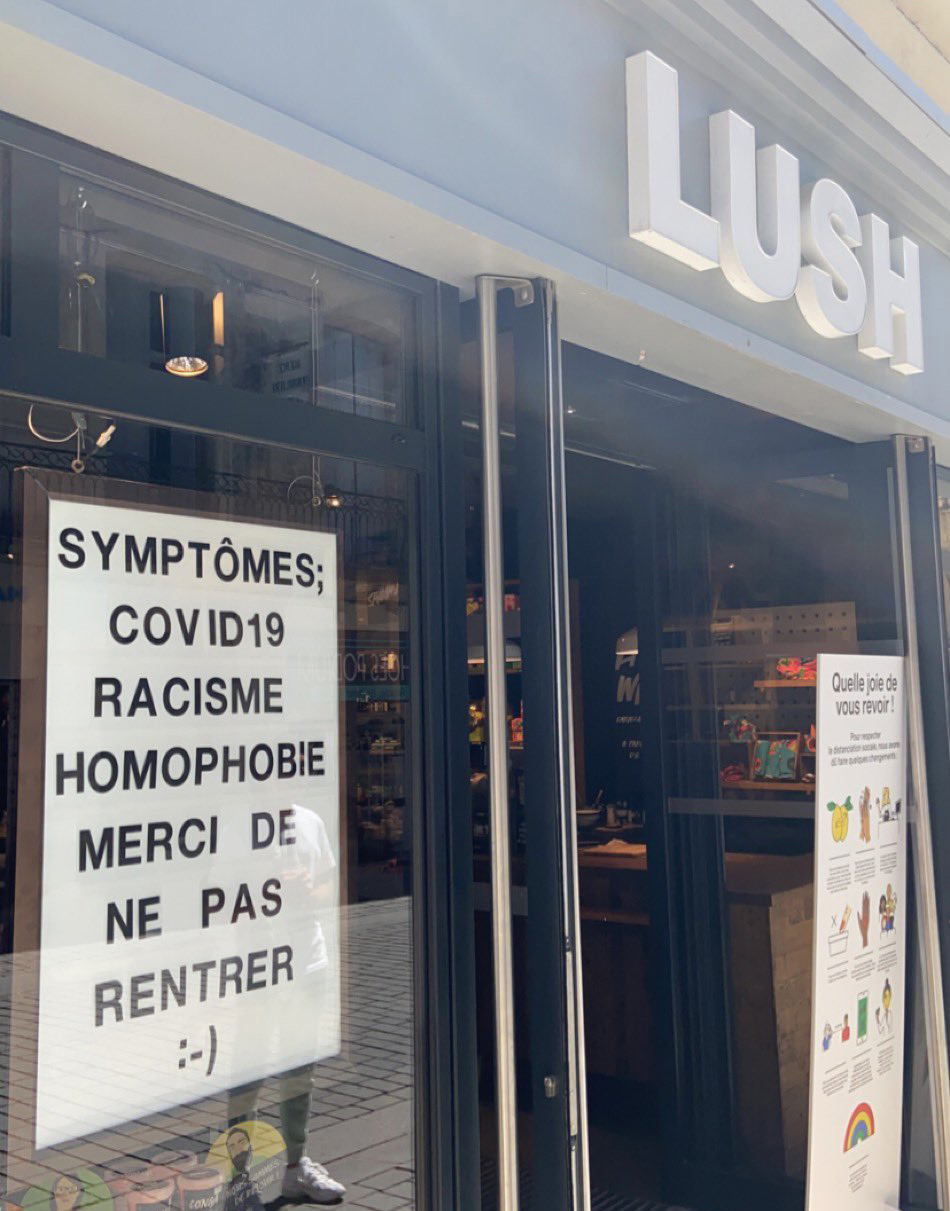
Lush concentrates its communication efforts on online channels and, here again, conveys its values around ethics and transparency. You will find on YouTube many videos produced by Lush that show you how the products are made. You can see how the products are made by hand using natural products. Far from the aseptic world of the factories of the world’s cosmetic giants, we discover in these videos an artisanal process that is more about craftsmanship than chemistry. These videos are therefore intended to “reassure.”
The distribution
Lush products are only distributed through the brand’s boutiques. It is, therefore, an owner distribution network. E-commerce has also developed thanks to the Covid-19 crisis.
Lush’s marketing mix is very much based on people. The employees’ joie de vivre is also expressed online in the videos that the brand broadcasts on social networks, such as in this video on making an eggplant-shaped soap. Credits: Lush via YouTube.

People
People are really at the center of the customer experience proposed by Lush. Employees are a central part of Lush’ marketing mix, so prominent that they become a driver of loyalty.
The selection and training process is extraordinary because employees have a joie de vivre and empathy unique to Lush. No other brand can claim to instill such a joie de vivre through its employees. What is also characteristic of the brand is that employees can indeed “be themselves” at work. Tattoos and piercings are out where they would otherwise be hidden.
This joie de vivre is also transmitted online. Some Lush employees present videos to show the process behind the scenes. Gilda (see video above), for example, is generating waves of positive comments on YouTube. The screenshot below shows that the employees’ positive attitude and cheerfulness are transmitted to the customers.

The processes
As explained here, the “process” part of the marketing mix is concerned with the processes related to customer service. We will distinguish between offline and online processes.
Online processes
Customer requests are handled by the customer service department of the country where the product was purchased. The responsibilities are, therefore, territorial. The online customer service answers requests for information. However, in case of problems, the customer is asked to go back to the store where they made the purchase.
Offline process
A lot of freedom is given to the store managers regarding customer service. A little like communication, a pragmatic approach is always favored to satisfy the customer. For example, it is enough to kindly request a free sample of a product to be offered to you.

The physical environment
This aspect of the marketing mix is another crucial element of the Lush strategy. Lush stores are a place where people enjoy going because their senses are stimulated. Lush applies all the sensory marketing trade tricks to create a unique customer experience in its sales outlets.
Lush plays a lot on the senses to make its customers buy. The English brand is a champion of sensory marketing. A visit to a Lush store awakens all the senses:
- Visual: the colorful products create a unique visual atmosphere. The colored soaps and bath bombs offer a strong color contrast with the black packaging.
- Olfactory: like Abercrombie & Fitch, we can speak of an olfactory signature of Lush. This is recognizable from the street where the scents of soaps, shampoos, and other bath bombs are mixed.
- Auditory: the joy and energy of the brand is also characterized by the music that is played in the sales outlet
The materials used in the sales outlet are in the image of the brand: natural. There is a lot of raw wood and bare brick walls.
Posted in Marketing.



